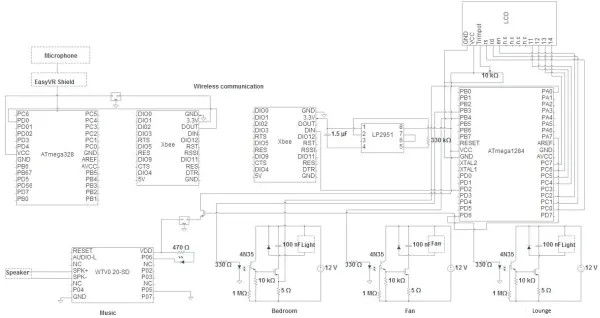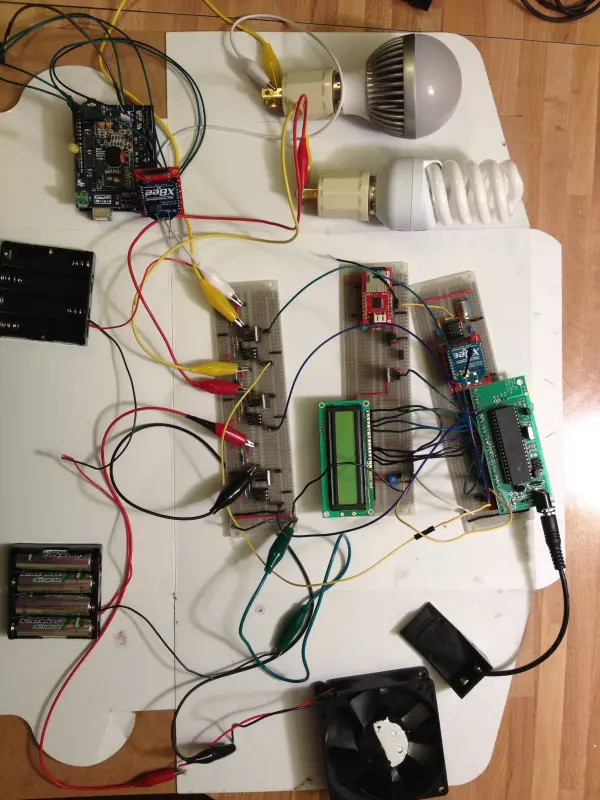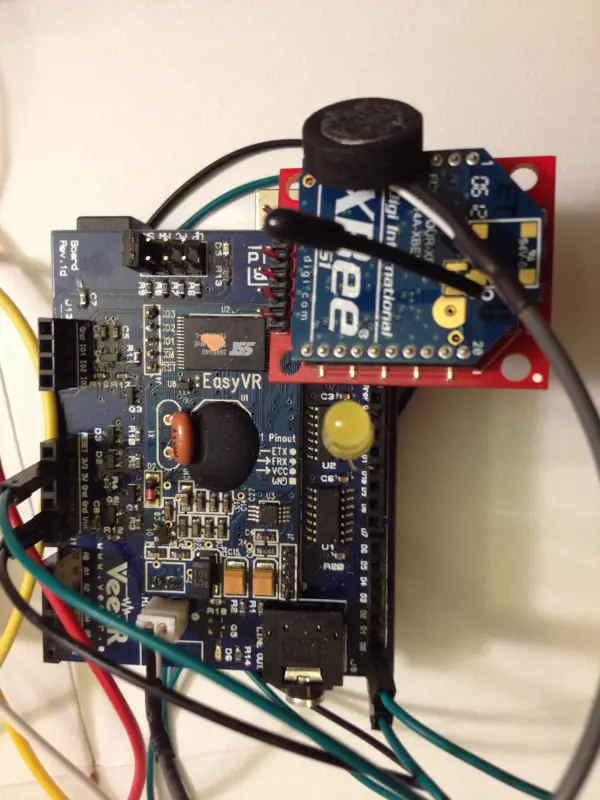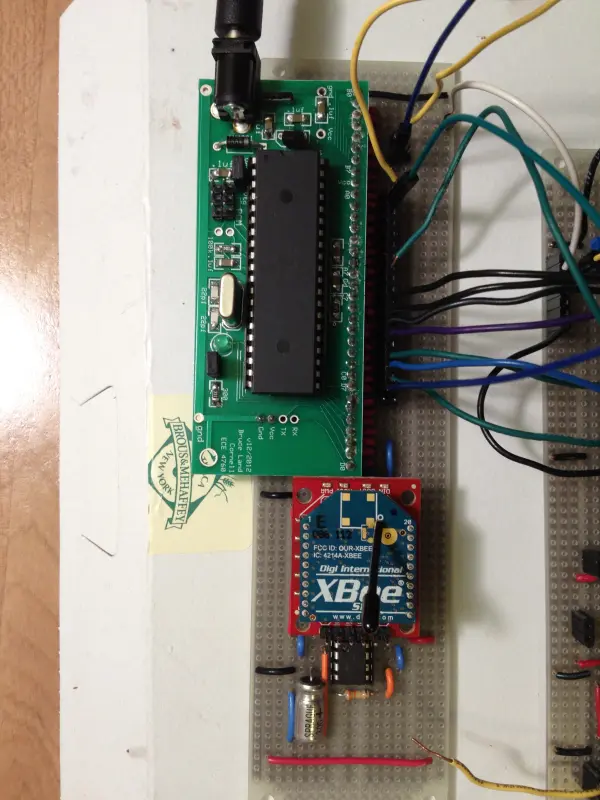Motivation
We have developed a smart home control system that enables individuals to voice-control their household devices. This system operates wirelessly and allows users to manage various home facilities, such as lights, fans, and background music, using voice commands. We have successfully implemented the basic functions of controlling lights, fans, and music. Beyond simple on/off commands, our system supports scheduled control and can detect errors in case of device malfunctions. The system is highly responsive, ensuring swift execution of commands.
Our smart home system is a glimpse into the future of home automation. Its primary aim is to enhance convenience in people’s lives. Rather than manually operating switches, our system responds to voice commands, a feature we believe will become increasingly prevalent in the next decade. Our project focuses on making people’s lives more convenient, comfortable, and secure while also promoting energy efficiency. Imagine cooking a large pot of soup and needing to leave the kitchen, but your hands are occupied. With our system, you can voice-command the lights off while carrying your pot of soup. Additionally, if you’re reading in bed at night and uncertain about when you’ll fall asleep, you can instruct the system to turn off the lights after a specified time, thanks to the system’s timer functionality.
Early Work
Why we choose wireless signal transmission?
When a person returns home and wishes to activate lights, fans, or music in their household using voice commands, they may encounter limitations due to the short transmission range of voice signals. In noisy environments, it becomes challenging for the system to accurately interpret the spoken instructions, and sometimes the voice recognition chip might misinterpret them due to external noise. To address these issues, we have devised a solution.
Our approach involves placing a central control unit at the room’s center, which wirelessly transmits digital signals to other microcontrollers located throughout the space. Upon receiving these signals, the microcontrollers execute predefined on/off and dimmer functions. By implementing this method, we overcome the limitations of transmission distance and signal interference. Using XBee technology, we can transmit signals over a maximum distance of 1000 meters, ensuring efficient and reliable control of household appliances.
Why we choose xbee?
XBEE offers numerous advantages in comparison to existing remote control solutions. These advantages include more robust communication and heightened reliability, expanded features and adaptability, seamless interoperability, and the elimination of line-of-sight limitations. In our project, we have chosen to employ XBEE for point-to-point communication, which proves to be efficient and suitable for household applications. This communication method remains effective over long distances and can penetrate walls without signal blockage. Given these XBEE capabilities, we can strategically position the central voice recognition microcontroller within a household, enabling communication with other microcontrollers equipped with XBEE receivers. This facilitates the execution of various functions by transmitting distinct instructions. To represent controls for the fan, lounge room LED, and bedroom LED, we use different characters such as “a,” “b,” and “c.”
For configuring and testing XBEE communications, we utilize the X-CTU program provided by Digi. Through this program, we adjust the baud rate to 9600 and configure identical pin numbers for our two XBEE modules. This setup ensures that there is no interference from other XBEE or RF devices, preserving the integrity of wireless communication between the two XBEE modules.
High Level Design
Rationale and Sources
Numerous companies participated in the school career fair, showcasing their products to students. Among them was Lutron, a renowned company specializing in lighting control systems for residential, commercial, and various other types of buildings. Lutron presented their advanced LED products, complete with a comprehensive control system, which typically costs around $3000. This presentation piqued our interest, and we began exploring ways to enhance convenience and energy savings.
After deliberation, we concluded that implementing a wireless, voice-controlled system within households could offer significant benefits. Our project’s fundamental concept revolves around enabling people to control their household electrical devices through voice commands when they are in a room and within proximity to the device they wish to operate. In most situations, this system promises to introduce enhanced convenience into people’s daily lives.
Logical Structure

Our project involves two CPUs, the ATmega328 and ATmega1284, and utilizes wireless communication through two Xbee chips. One Xbee chip is connected to the ATmega328, serving as the transmitter, while the other is linked to the ATmega1284, functioning as the receiver.
We selected the ATmega328 as the transmitter because it is equipped with a microphone for capturing and storing voice signals from users. When a voice instruction is spoken, the microphone records it, and the ATmega328 receives and processes it. Through program control, the ATmega328 then transmits this signal to the transmitter Xbee. Once the Xbee is activated, it sends corresponding signals to the receiver Xbee based on the different voice instructions. Upon successful wireless communication setup, instructions are sent to the ATmega1284.
We’ve configured two timers, timer0 and timer2, to generate four PWM waves responsible for controlling the activation, deactivation, and intensity adjustment of lights and fans. Additionally, we’ve designated one pin to control the music player, switching it on or off through high or low voltage to enable the MOS transistor. The feature of delayed shutoff is also implemented using timer1, allowing users to specify when the lights or fans should automatically turn off. A time counter is integrated to display the countdown process.
To inform users of any potential issues such as light or fan malfunctions due to an open circuit, we’ve included fault detection functionality, which the LCD screen uses to provide detailed notifications. In summary, our project offers parallel control over lights, fans, and a music player.
Trade-offs
At the project’s outset, we opted for a voice-controlled smart home system. Given our possession of the ATmega328, we embarked on a search for a suitable voice recognition module to integrate with it. Ultimately, we settled on the EasyVR Shield – a Voice Recognition Shield ideally suited for the ATmega328, offering advanced voice recognition capabilities. While it was a cost-effective choice, it did amount to approximately $50, which slightly pushed our project budget beyond the initial estimate.
To create an organized and aesthetically pleasing circuit, we invested a considerable amount of time in circuit design to maximize space utilization. We assembled the ATmega1284, a single Xbee chip, an LCD, a music player chip, and three PWM wave circuits on three separate solder boards, each measuring 6 inches. Carefully connecting and soldering the components, we ensured a robust wiring setup.
Initially, our plan was to power the entire circuit with batteries, which would have offered the advantage of portability. However, upon testing, we discovered that batteries struggled to provide consistent power to the three distinct home devices, sometimes resulting in voltage fluctuations. Regrettably, we had to abandon this approach and instead turned to the lab’s power supply as a more dependable source.
FCC Rules
We employed Xbee chips to establish wireless communication. In order to ascertain the feasibility of utilizing Xbee for wireless communication within the United States, we conducted an examination of the Federal Communications Commission Rules. The Xbee chips operate on the 2.4 GHz frequency within the ISM band. Upon reviewing the FCC rules specified in part 15 subpart B, we determined that the 2.4 GHz frequency is exempt from compliance with the technical provisions outlined in this section, as they pertain to preventing harmful interference in residential installations.
Existing Patents and Copyrights
To ensure that we do not violate any patents or copyrights, we conduct a search using specific keywords on Google after completing our work. In this process, we often search for terms like “voice control home” and similar phrases. During one such search, we came across a product called HAL (Home Automated Living) available at smarthome.com (HVL, Home Automated Living). It’s important to note that we had not previously read the details about their product or explored their website.
Subsequently, after completing our own project, we decided to read about their product and make a comparison. Upon analysis, we determined that our projects are distinct in their functionality. HVL connects a cellphone to PC software using a telephone wire. To control home devices, users must make a phone call to the device and send specific commands, such as when to turn on the living room lights and for how long. All these actions are managed through the computer.
In contrast, our device operates in an entirely different manner. Users need to be present in their homes, within close proximity to the microphone, and use voice instructions to control the home devices they desire.
Hardware Design
Hardware Overview


This represents an overview of our project’s schematics and physical map. We’ve assembled all components onto three solder boards. The microphone, EasyVR Shield, and Xbee transmitter are directly connected to the ATmega328 chip without requiring soldering. The ATmega1284 is linked to an LCD and supplies voltage to the receiver Xbee. To power the Xbee, we channel Vcc through a voltage regulator to obtain a stable 3.3V output. Additionally, three pins generate PWM signals for three different household devices. One of these pins serves as a connection point to the NMOS gate, allowing VCC to flow into the NMOS and, subsequently, into the voltage regulator, providing a 3.3V output to the music player chip.
Part1-Transmitter part

This section comprises three components: the EasyVR Shield housing a microphone, the ATmega328, and the transmitting Xbee module. Using the pre-assembled board, we can seamlessly place the EasyVR chip onto the ATmega328. We supply 3.3V from the ATmega328 to power the Xbee module and establish a ground connection between the Xbee and ATmega328. To facilitate signal transmission via the Xbee, we establish a connection by linking the Xbee DOUT pin to the ATmega328’s PD0 pin (also known as PCINT16/RXD).
Part2-Receiver Part

We personally assembled the MCU board and adhered to the instructions from lab1 to initialize the CPU. Subsequently, we utilized it to supply a 5V output to power all the other integrated circuits, including its connection to the LCD as per the lab1 lecture. After consulting the Xbee datasheet, we established a connection between the DIN pin and PD2 of the ATmega1284. It’s worth noting that there’s a slight disparity in power output between the ATmega328 and ATmega1284. Notably, the ATmega1284 lacks a 3.3V voltage output. To address this, we employed the LP2951 voltage regulator to reduce the 5V output to 3.3V. Following the guidelines in the datasheet, we were able to achieve a stable 3.3V output from the LP2951 circuit.
